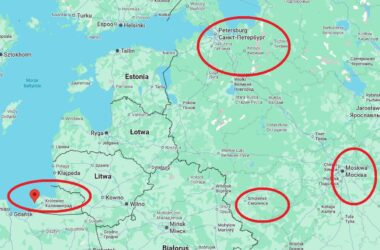Former NATO Secretary‑General Jens Stoltenberg details how Donald Trump’s 2016 victory sparked a volatile relationship that nearly toppled the alliance during a 2018 Brussels summit.
Trump and NATO: Stormy Beginnings
In 2016, after Trump won the U.S. presidential election, uncertainty spread through NATO’s headquarters. Stoltenberg, then Secretary‑General, was shocked by the results, as were his colleagues.
During his campaign Trump repeatedly referred to NATO as “obsolete” and warned that the United States would stop funding European defence. Stoltenberg’s first telephone call with the new president offered brief relief; Trump assured him he was a “big fan of NATO,” and the conversation seemed cordial. Yet Trump did not fit the presidential mold, remaining direct, impulsive and often confrontational.
First Meetings and First Crashes
In April 2017, Stoltenberg made his first visit to the White House. President Trump greeted him warmly, but the discussion soon took an unexpected turn as he jumped between topics, even suggesting that NATO should intervene against North Korea.
Stoltenberg was most shocked by Trump’s focus on political optics. He questioned why European states did not spend 2 % of GDP on defence and even challenged the purpose of Iceland’s membership. Stoltenberg later wrote that this was the first time he realized that for Trump NATO was a bill to pay, not a shared community of values (On My Watch: Leading NATO in a Time of War, excerpts published by The Guardian).
MUST PAY – Speech that Shook the Alliance
The real tension surfaced in May 2017, at the inauguration of NATO’s new headquarters in Brussels. Trump spoke beside a monument honouring 9 / 11 victims, symbolising the principle of collective defence.
Rather than stressing alliance unity, he attacked allies for “unfair” financing, omitting any reference to 9 / 11 solidarity. Stoltenberg later noted how the president crossed out parts of the speech and wrote his own slogans in black marker: “MUST PAY” and “NOT FAIR”. For many leaders this moment revealed that Trump was seriously considering curbing U.S. engagement in NATO.
Summit That Could Have Ended NATO
The summit that could have ended NATO unfolded in July 2018 in Brussels. Stoltenberg recalls that days before, Trump warned him by phone that if European states did not raise defence spending, the U.S. might exit the alliance.
During the summit, he castigated allies—particularly Germany—for insufficient spending, proclaiming, “Germany pays 1 %; that’s shocking!” When no immediate commitments were obtained, Trump declared, “I’m leaving. There’s no reason to be here.” Silence followed. Angela Merkel whispered, “We must react.” A quick consult with Macron and Rutte averted the crisis. Rutte told Trump, “Mr President, allies have spent $33 billion more on defence thanks to your leadership. That’s your credit.” Trump smiled and handed Stoltenberg a card saying, “If you say that, we can agree.” Stoltenberg later said at a press conference he had uttered exactly what the leader wanted to hear, saving the summit and perhaps NATO.
Do the Money Keep Flowing?
Weeks later, Stoltenberg met Trump in New York. The president asked a single question: “Do the money keep flowing?” Stoltenberg answered, “Yes, sir. Money keeps flowing.” He added that this best reflected what NATO meant to Trump – more a business arrangement than a security community.










